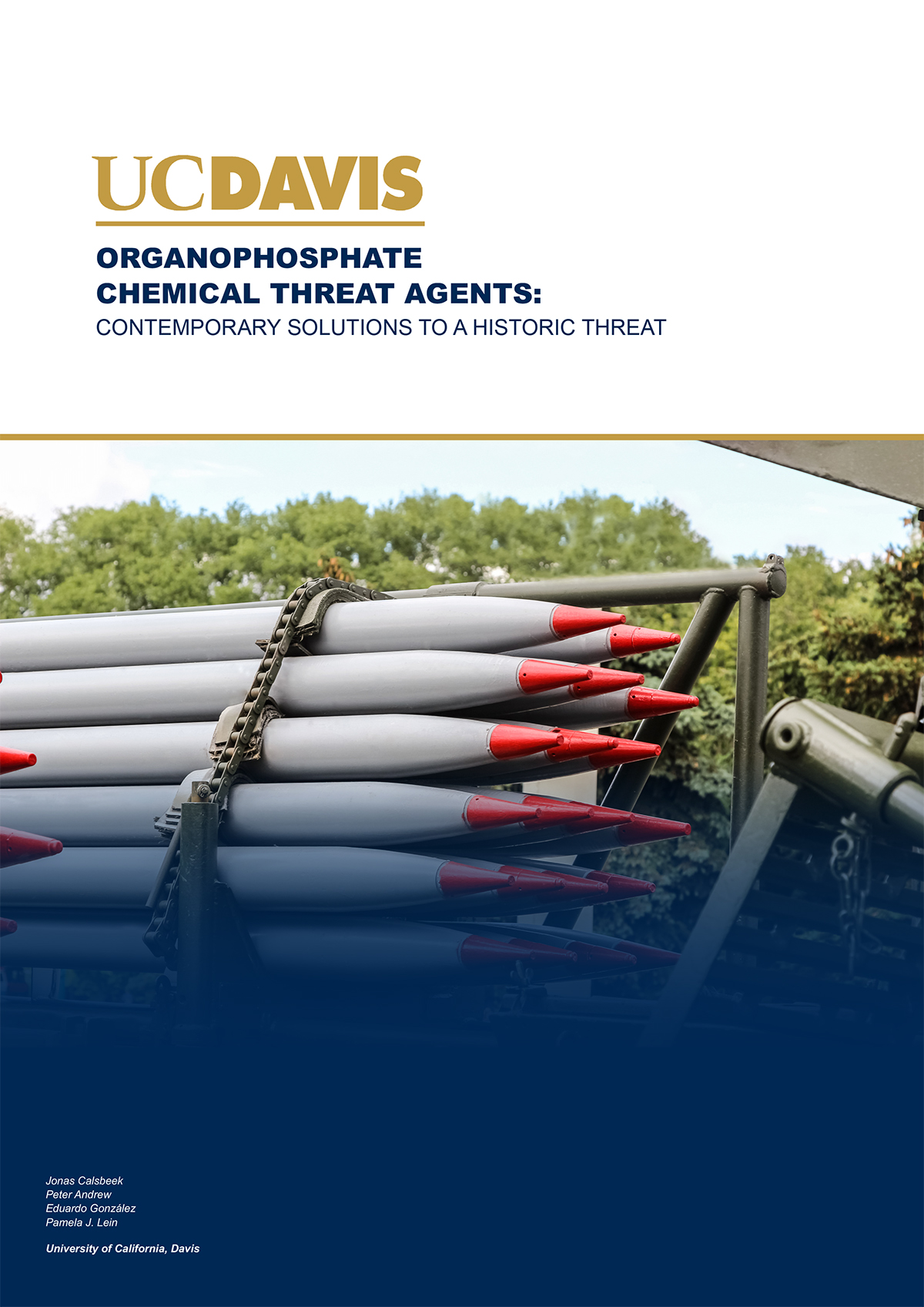Jonas Calsbeek, Peter Andrew, Eduardo González, and Pamela J. Lein talk about how to stop Organophosphate Chemical Threat Agents
The relevance of stopping chemical weaponry in 2020 remains strong: From the initial stockpiling of Organophosphate Chemical Threat Agents by Nazi forces, to the use of tabun and sarin in the Iran-Iraq war against the Iranian people, to modern day Syria and their ongoing onslaught of state horrors, the weapon remains prolific and brutal.
“On Aug. 21, 2013, I woke up in the dark around 4:45 a.m., struggling to breathe. My eyes were burning, my head was throbbing, and my throat was blocked. I was suffocating. I tried to inhale but all I heard was a horrible rasping sound as my throat closed up. An unbearable pain drummed in my head.
“The world began to blur. I pounded my chest but couldn’t breathe. My heart seemed about to explode. Suddenly, my windpipe opened. A gust of air pierced my lungs. Needles seemed to stab my eyes. A searing pain clawed at my stomach. I doubled over and shouted to my roommates: “Wake up! It’s a chemical attack!”
This is from a first-hand account from a survivor of an organophosphate chemical attack in Syria in 2017 from “I Survived a Sarin Gas Attack” by Kassem Eid.
What does exposure to these chemical weapons mean for the human body?
What are Organophosphate Chemical Threat Agents composed of, how can they be counteracted and then what are the long-term impacts on the individual human body?
The questions that remain are answered in intricate detail by experts in Neurotoxicology, who push for the need to develop a drug pathway that can save people from this ongoing weapon of war.
If you want to know more about the historic and contemporary use of this weapon, please read more about it here.


